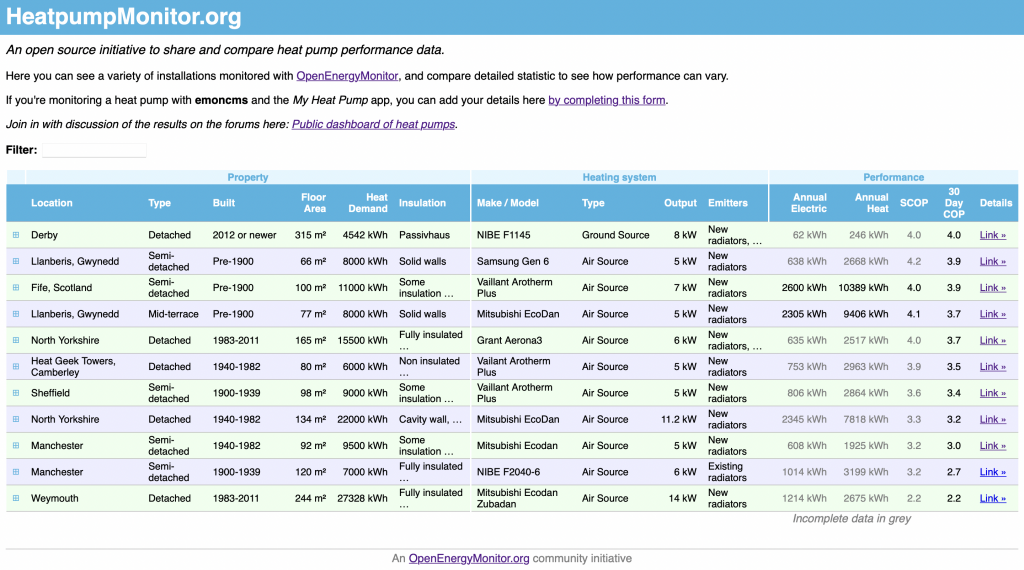HeatpumpMonitor.org is a great initiative to counter the view from some quarters that ‘heat pumps don’t work in normal buildings’ with research and facts. It shows a dashboard of real-world performance data from a modest but ever-increasing list of heat pump installations.
Currently, all the systems listed are in the United Kingdom and most are Air Source Heat Pumps in Retrofit (rather than New-Build) installations – but a recent addition is a certain new-build with a Ground Source Heat Pump.
HeatmpumpMonitor is built on top of emoncms (which I’d be using for internal temperature and humidity monitoring if I hadn’t already gone down the OregonScientific route) and links out to emoncms.org for further detail on each of the installations.

For people already capturing data using a local emoncms installation (such as might run on an emonPi) it’s a simple configuration process to forward that to emoncms.org and publish to the dashboard. Since I’m not using a local emoncms, I run a script (every 2 minutes) to extract the relevant updates from my local InfluxDB database and push those to the emoncms.org API.
Normally, emoncms.org is a chargeable service but the nice folks who run that very kindly waived the fee for inclusion in this dashboard.
